Photographs of the Ondes Martenot
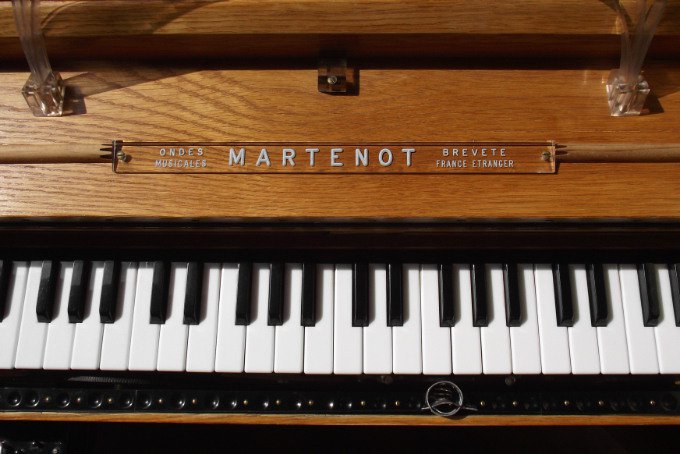
The Keyboard
The keyboard of the ondes is mobile; it moves laterally in order to allow expressiveness of vibrato. This is probably why it never became polyphonic.

The Ring
The ring (or the ribbon, “bague” or “jeu au ruban”) provides the possibility to slide over its whole range. It reminds the expressiveness of a voice or of a string instrument. The ring is worn on the index finger of the right hand.

Is the Martenot difficult to play?
Learning to play the Ondes is similar to learning a classical instrument. It is very user friendly at first and with time, one can achieve high degrees of refinement.

Martenot Serial Number
Estelle Lemire plays on an original Martenot made for her in 1987, serial number 353.
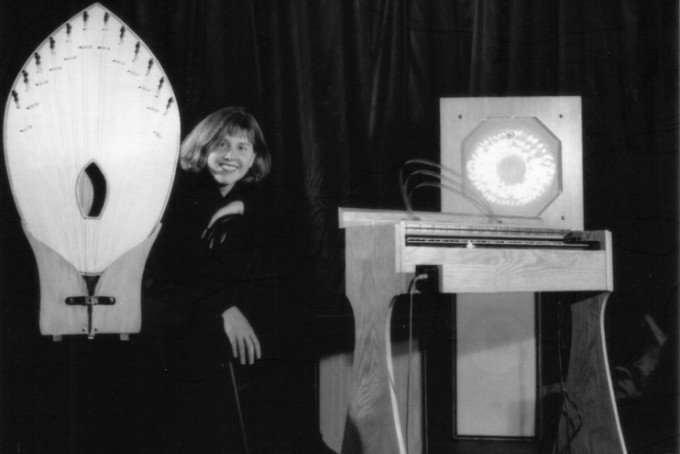
The Speakers
Traditionally, the Martenot numbers 4 speakers, 1 loud speaker and 3 resonators. D1 is a normal loudspeaker, D2 is a spring resonator, D3 has a tam-tam that colors the sound and D4, with its wonderful palm leaf shape adds a resonance of strings.
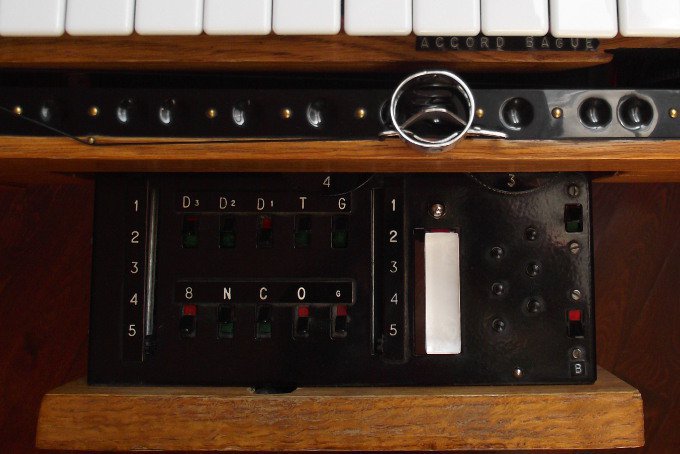
The Control Panel
The left hand plays the dynamic control key (“la touche d’intensité”) and operates the changes of timbres and speakers switches. Generally, the second finger plays the dynamic key (in white).
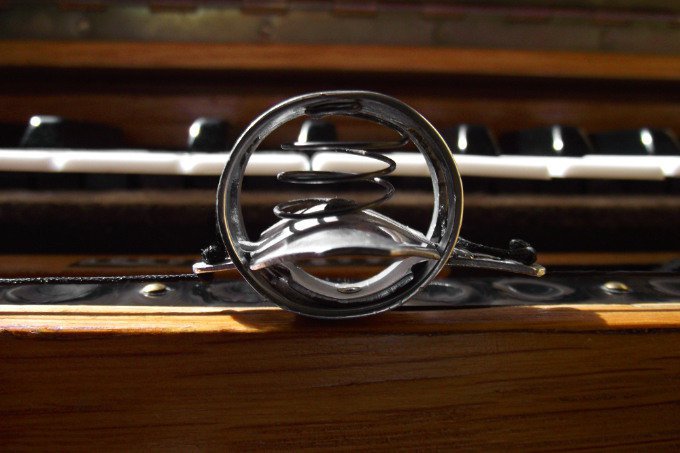
The ring
The ring is attached mechanically to a thread enrolled around a potentiometer that provides glissandos and fine tunings. At the origin, a ribbon was used for this function; a thread replaced it, but the name was kept by the ondists.
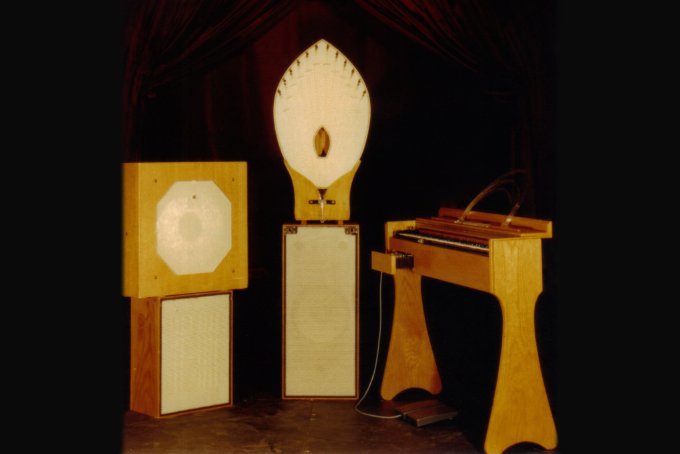
The Instrument
Invented in 1928 by Maurice Martenot, the Ondes is a 7-octave monodic instrument that gives the performer the possibility of shaping the electronic sound just like a flutist or cellist would do. It features 2 performing techniques: the keyboard and the ring.

The Keyboard
The keyboard of the ondes is mobile; it moves laterally in order to allow expressiveness of vibrato. This is probably why it never became polyphonic.

D2 Speaker Close-Up
The D2 produces a pure and clean metallic sound by applying a vibration to an array of springs. Much more reliable and powerful, it substitutes the palm. Ondists may opt to use electronic multiprocessors to replace the Martenot resonators.
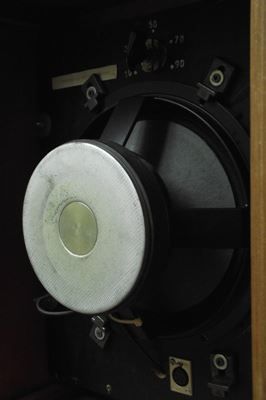
D2
Close-up of a D2 speaker.

The Gong
Close-up of the “metallic” speaker or D3. It is actually a tam-tam that is set to vibrate sympathetically to produce a metallic random harmonic halo, of a unique quality. Martenot planned the acoustirc resonators to play the same role that the soundboard does to the piano or to string instruments. His trip to Indonesia in 1931 had a profound influence on his conceiving of these resonators

The Palm
The palm, elegant but delicate speaker of the Martenot system.
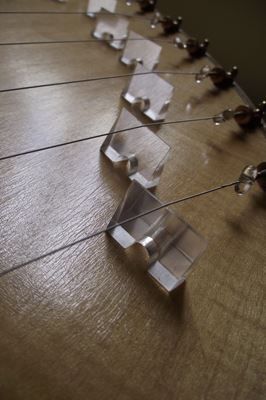
Palm Bridges
Detail of the bridges of the palm. Plexiglass, a new material at the time, was used in the making of several parts of the Ondes, the bridges, the music desk and the dynamic control key.

The Palm
Detail of the tuning mechanism of the palm

Palm Tailpiece
Overview the tailpiece of the palm. On both sides of this resonator, 12 strings build a chromatic scale and must be precisely tuned in order to produce a fine harmonic resonance. It is however seldom used nowadays. Its shape suggests a lotus leaf and was originally designed by ondist Ginette Martenot, the invertor's sister.
Use the 'Previous' and 'Next' buttons (or the left and right arrow keys) or swipe the content on your touchscreen device to browse through the gallery. Click on the cross to toggle the description box.
